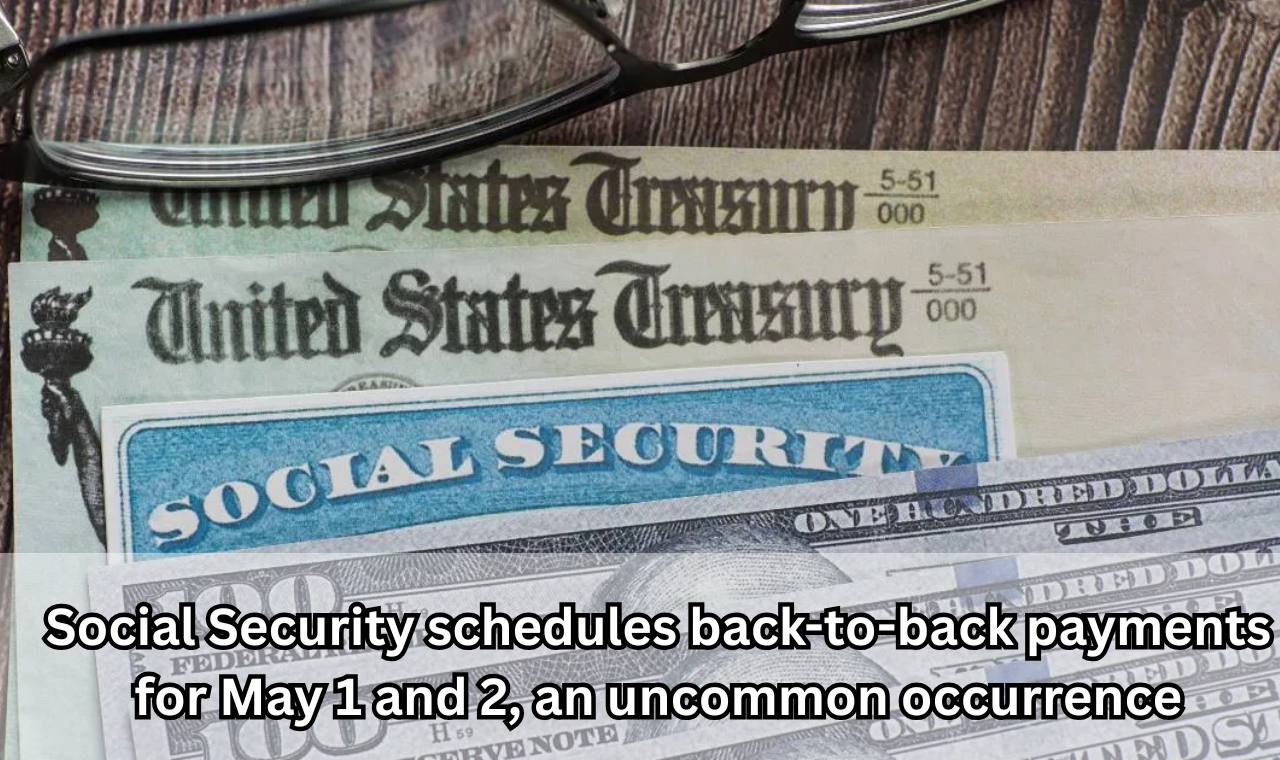In an unusual alignment of scheduling, millions of Americans will receive their Social Security-related payments on two consecutive days in early May 1 and May 2, 2025. While this back-to-back timing might seem unexpected, it follows longstanding protocols the Social Security Administration (SSA) uses to avoid delays caused by weekends or holidays.
Here’s what you need to know about the timing, who’s getting paid when, and why this schedule matters.
May 1: SSI Recipients Get Paid
The first wave of payments on May 1 goes to beneficiaries of Supplemental Security Income (SSI). SSI provides monthly payments to low-income individuals who are elderly, blind, or disabled. According to the SSA’s established calendar, these benefits are usually distributed on the first day of each month. That rule holds steady for May.
If May 1 were to fall on a weekend or federal holiday, payments would be issued on the last business day before it. However, May 1, 2025, falls on a Thursday, so SSI payments will go out right on time.
Additionally, there’s a second SSI payment scheduled for May — on Friday, May 30. That’s not a bonus; it’s the June payment being issued early because June 1 lands on a Sunday. The SSA always ensures payments are made on the last business day before a weekend if the regular payment date is affected.

May 2: Social Security Benefits for Longtime Recipients
The following day May 2 Social Security retirement and disability benefits will be disbursed to a different group: those who began receiving benefits before May 1997.
This group of recipients traditionally gets their Social Security checks on the 3rd of each month. However, since May 3, 2025 is a Saturday, the SSA is moving the payment date forward one day to Friday, May 2, to avoid the weekend.
This adjustment ensures that there are no delays for seniors or disabled individuals who rely on their monthly checks for essential living expenses. The SSA regularly makes such date shifts when the 3rd falls on a weekend or holiday.
Why It Looks Atypical — But Isn’t
The closeness of these two payments on May 1 and 2 might raise eyebrows for some recipients, especially those who get both SSI and Social Security (a group often referred to as “concurrent beneficiaries”). However, this dual-day schedule isn’t unprecedented.
“This isn’t a change in policy,” an SSA spokesperson explained in a public FAQ. “It’s simply the result of our existing rules that ensure payments are never delayed due to weekends or federal holidays.”
Concurrent beneficiaries those receiving both SSI and Social Security will likely notice the payments just one day apart, rather than spaced out as they are in some months. It’s also important to note that these early or adjusted payments are not extra checks. The May 30 payment, for example, is the regularly scheduled June SSI payment.
Who Gets Paid When in May 2025?
Here’s a quick breakdown of May’s payment dates:
- May 1 (Thursday): SSI recipients receive their regular monthly payment.
- May 2 (Friday): Social Security recipients who started receiving benefits before May 1997.
- May 8, 15, 22 (Wednesdays): Remaining Social Security recipients, based on birth dates, will receive payments on their regularly scheduled Wednesday. These are for those who started benefits after May 1997:
- May 8 for those born on the 1st–10th,
- May 15 for the 11th–20th,
- May 22 for the 21st–31st.
SSA Payment Schedule Resource:
www.ssa.gov/payments/
What Beneficiaries Should Do
If you’re expecting a payment on any of these dates, make sure your banking information is up to date, especially if you receive direct deposit, which is the SSA’s preferred method. For those who receive payments via the Direct Express® card, funds are typically available on the same day of disbursement.
If you don’t see your payment on the expected date, the SSA recommends allowing three mailing days (if receiving by mail), then contacting them.
Contact the SSA:
- Website: www.ssa.gov
- Phone: 1-800-772-1213 (TTY: 1-800-325-0778)
Final Thought
The close timing of Social Security and SSI payments in May 2025 is a good reminder of how the system prioritizes consistency and reliability — even if that means occasional quirks in the calendar. While the back-to-back deposits on May 1 and 2 may feel unusual, they’re simply the result of well-established safeguards to ensure no one is left waiting for the benefits they depend on.

Pankaj Kumar is a skilled content writer at OTE News, focusing on breaking news, technology, and socio-political developments. With a background in Mass Communication, he brings a balanced perspective to his articles, ensuring clarity and reliability. Pankaj has a knack for simplifying complex topics for readers.
In his free time, he enjoys photography, traveling, and experimenting with new cuisines. His curiosity and dedication to truthful reporting make him a valuable contributor to OTE News.




